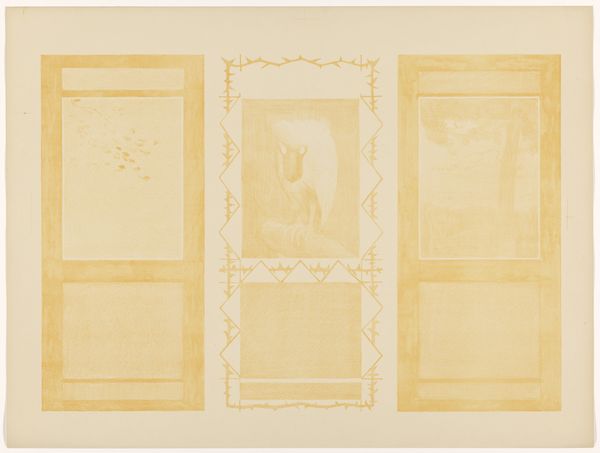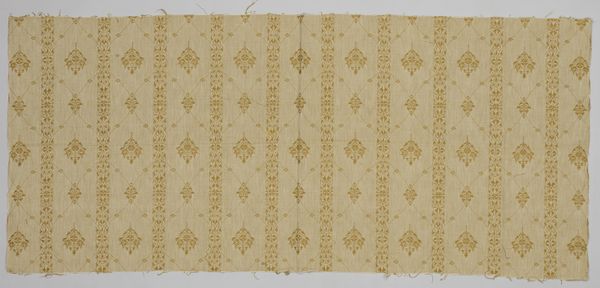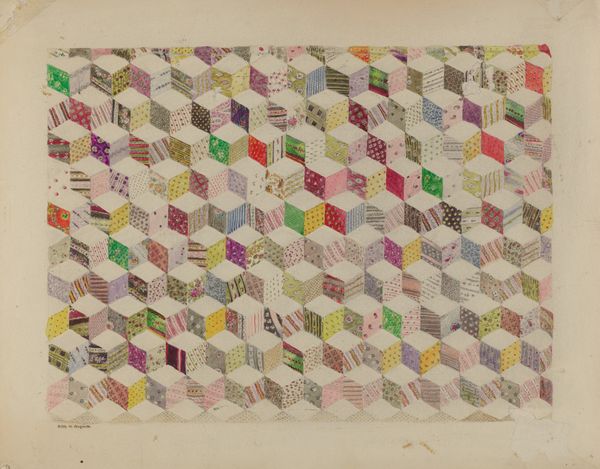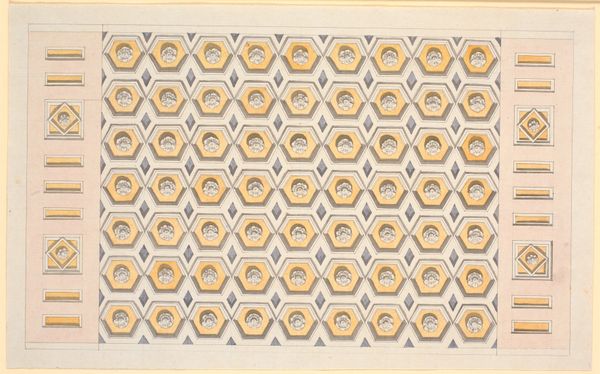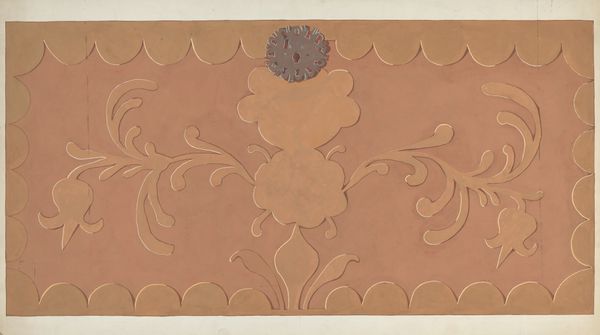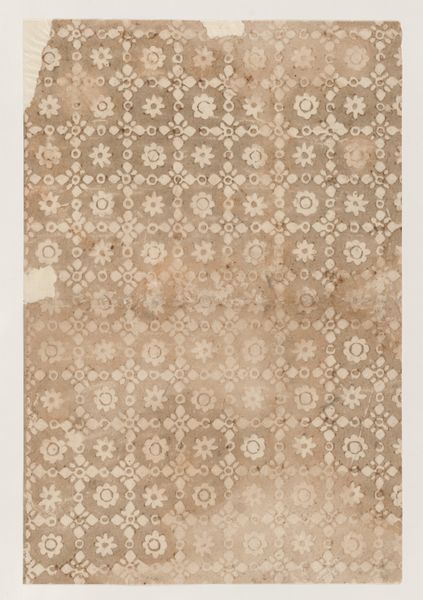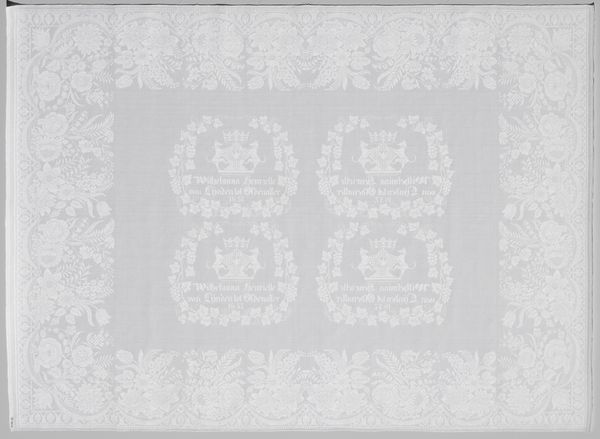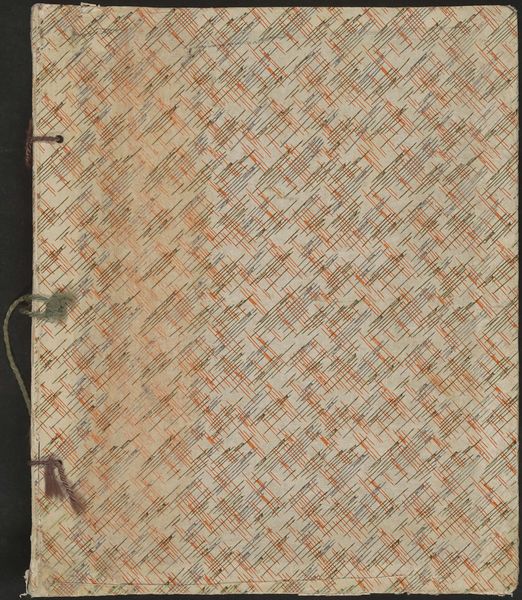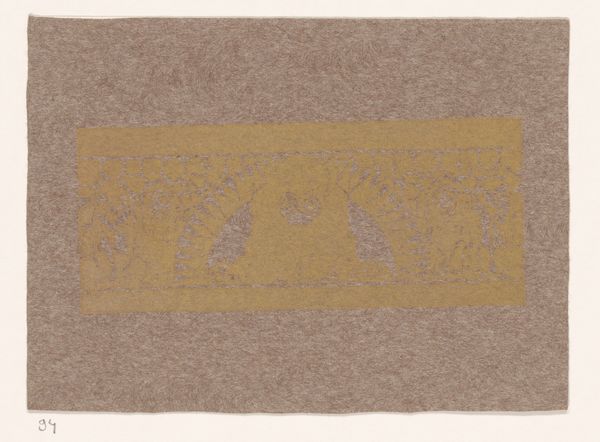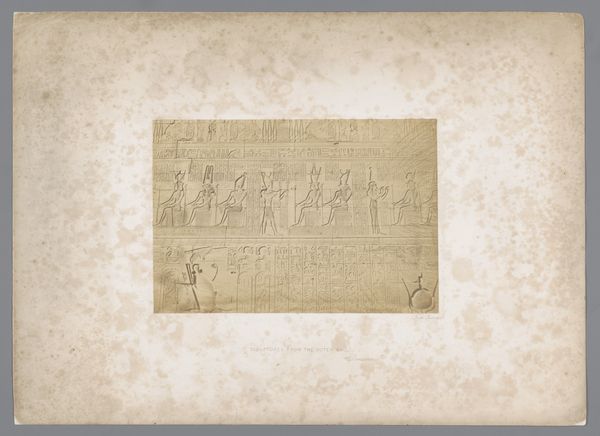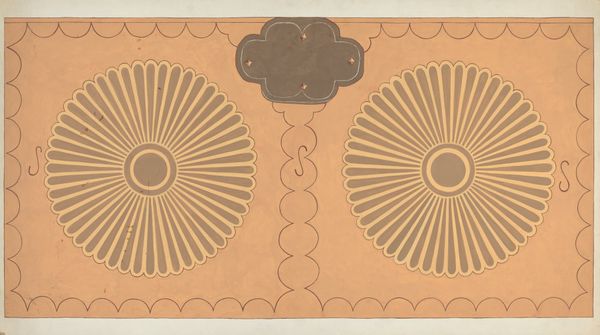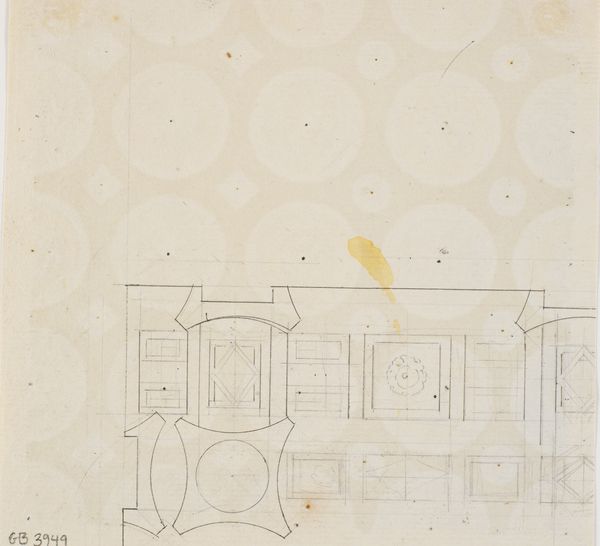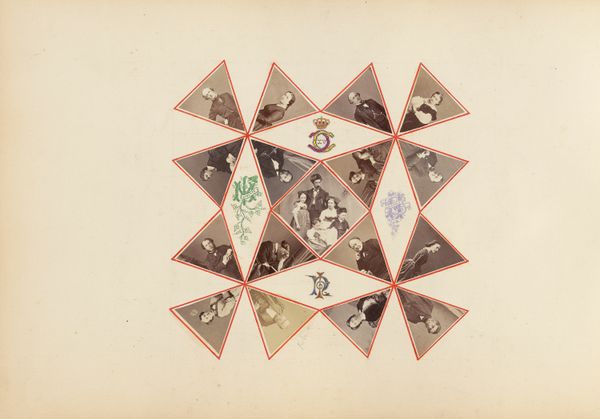
Fragment af loftskassetter i gult og violet 1743 - 1809
0:00
0:00
drawing
#
drawing
#
neoclacissism
#
pattern
#
geometric pattern
#
geometric
#
textile design
Dimensions: 180 mm (height) x 315 mm (width) (bladmaal)
Editor: Here we have Nicolai Abildgaard’s "Fragment of ceiling coffers in yellow and violet", made sometime between 1743 and 1809. It's a drawing, and what really strikes me is how contemporary it feels, even though it's hundreds of years old. The geometric pattern is so bold. How do you interpret its historical context? Curator: Well, you've hit upon something key there – that deceptive sense of modernity! Abildgaard was a major figure in the Neoclassical movement. Think about what "neoclassical" implies: a return to classical forms of ancient Greece and Rome. Editor: Right, a revival. Curator: Exactly! But it's not a simple copy. Consider the role of patronage in Abildgaard's time. Who commissioned these designs? These ceiling coffers, meant for a grand space, signal wealth and status. The geometric rigidity is itself a statement against the more flowery, excessive Rococo style that preceded it. What do you think that choice conveys? Editor: So, it’s almost like a visual declaration of order and reason. And that squares perfectly with what I remember about Neoclassicism now. The flowers seem like a small attempt at whimsy. Curator: Yes! And think of where this artwork is now—a museum! So it has shifted in public role as an item for the elite into an artwork for all to enjoy. That context, itself, changes how we perceive it today. Editor: That makes the whole piece more resonant now, thank you. I will think of Neoclassicism as a very intentional design and with different status then vs today. Curator: Glad to hear that you will enjoy viewing it with new appreciation and analysis.
Comments
No comments
Be the first to comment and join the conversation on the ultimate creative platform.
